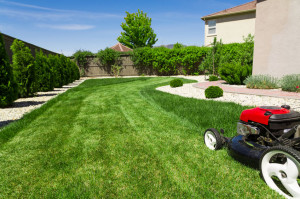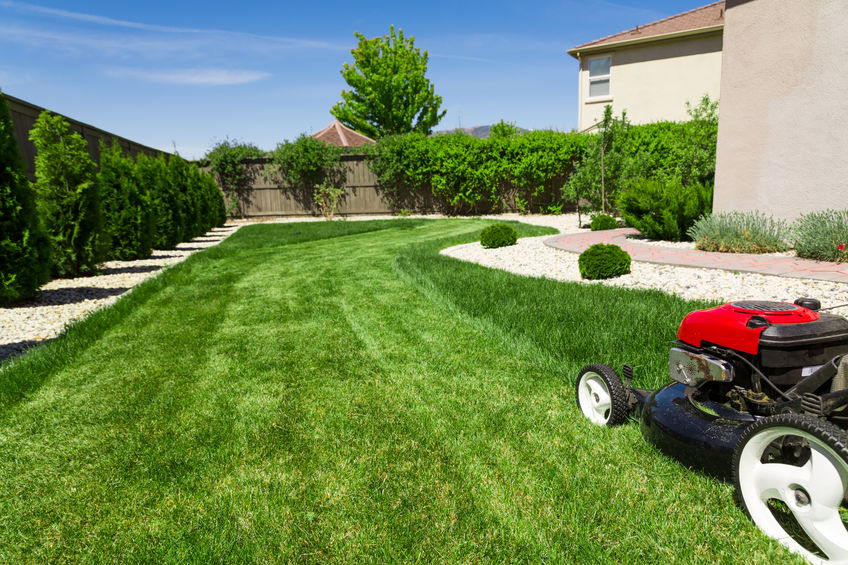There’s more to cutting your grass than just taking out the lawnmower and getting the job done. The particular type of grass in your yard is what determines the height it should be cut. If you keep your lawn at the ideal height, your turf will stay lush and healthy, easily fending off weeds, drought, and disease.

What’s the Ideal Height?
It is incorrect to assume that the shorter you cut your grass, the less often you’ll have to do so. Grass that’s cut too short is more likely to be hit by a weed invasion, drought, or heat damage.
By the same token, letting grass grow too long is problematic, too. Longer grass creates an ideal environment for mosquitoes, voles, mice, and snakes. Longer grass is harder to mow, and extra-long clippings are a pain to deal with if you’re raking or bagging your yard clippings.
Cool-season turfs such as fescues and Kentucky bluegrass grow most during spring and fall when temperatures are cooler. These grasses should be mowed down to 1 to 4 inches high.
Warm-season grasses like St. Augustine, Bermuda, and Zoysia hit their peak growth in summer. The specific type of grass you have in your yard should dictate the specific mowing height, and even those heights can vary by region.
If you have ever gardened before, you may be familiar with the concept of “pinching” a plant to stimulate rugged growth. Mowing your lawn follows the exact same concept. Leaving the grass longer means a lost opportunity to stimulate grass growth, which makes your lawn healthier and more appealing. Grass that is cut too short is also known as “scalping” and can stress your lawn.
Suggested Heights – Warm Season Grasses
- Bahia: 2.5-4 inches
- Bermuda: 0.5-2.5 inches
- Buffalo: 1.5-4 inches
- Centipede: 1-2.5 inches
- Kikuyu grass: 1-1.5 inches
- St. Augustine: 1-3 inches
- Zoysia: 0.5-3 inches
Suggested Heights – Cool Season Grasses
- Fine fescue: 1.5-4 inches
- Kentucky bluegrass: 0.75-3.5 inches
- Perennial ryegrass: 0.75-2.5 inches
- Tall fescue: 1.5-4 inches
How Often to Mow?
Rather than setting a specific mowing schedule, homeowners should pay attention to the growing conditions and resulting height of the grass before determining when or how often to mow. For example, if your area has had rain one week, then the grass will grow taller more quickly, needing to be mown sooner than if there had been no rain.
The ideal height of your lawn varies throughout the growing season and also depends on growing conditions. In general, you should never mow more than one-third of the total grass blade length during a single cutting of the grass.
In the spring, mow your lawn shorter to get rid of any winter-burned strands and prepare the grass for a fresh growing season. In the summer, let the grass grow slightly longer to shade the soil under the lawn, which prevents troublesome weeds such as crabgrass while also protecting the roots of your lawn from the heat. During the fall, mid-length grass is recommended.
Tips for Your Best Lawn
- Grasses should be allowed to grow taller in summer and during drought.
- Warm-season turf should be mown shorter in spring to remove dead grass.
- Grasses growing in shade should be allowed to grow taller.
If you are ready to freshen up your lawn for the season, we’d love to help! You can learn more about our sod options and about us on our website.





